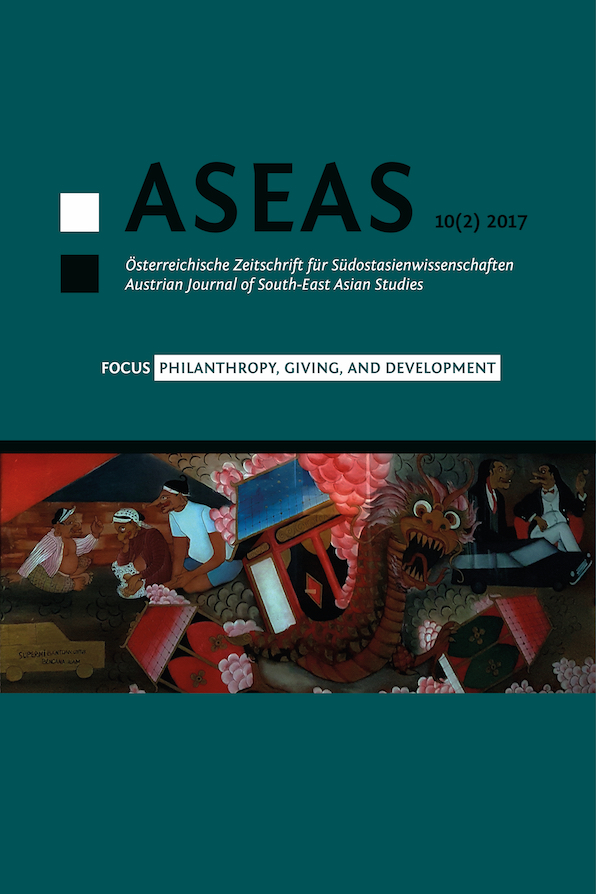Legacies of Cultural Philanthropy in Asia
DOI:
https://doi.org/10.14764/10.ASEAS-2017.2-3Keywords:
Art, Asia, Culture, Ford Foundation, PhilanthropyAbstract
During the second half of the 20th century the Ford Foundation – at the time the world’s largest private philanthropy – made a significant commitment to issues of cultural heritage as part of its international work in Asia. Across countries in South and Southeast Asia, in particular, foundation grants were made to governments, private institutions, and individuals engaged in a wide range of fields in the arts, humanities, and applied sciences such as archaeology. The Foundation’s culture programs embraced tangible heritage as well as a range of living traditions and cultural expression. Such rubrics served as important labels locating culture within the broad portfolio of the Foundation’s grant-making, as well as touchstones employed to justify philanthropy’s attention to culture in contrast to the dominant emphasis of international aid on economic development and modernization. This paper will look at how one of the world’s most important international philanthropies built a rationale for activism in cultural fields in Asia, how a decentralized format for local decision-making enabled sustained support for building capacity and knowledge in the arts and humanities, and, ultimately, how the ‘culture lens’ has gradually been displaced– or perhaps redefined – in the Foundation’s current international work.
Downloads
Published
Issue
Section
License
Copyright (c) 2017 Testjournal ASEAS-Konversion

This work is licensed under a Creative Commons Attribution-NonCommercial-NoDerivatives 3.0 Unported License.
For all articles published in ASEAS before December 2014 and after July 2022, copyright is retained by the authors. For articles published between January 2015 and June 2022, the Society for South-East Asian Studies (SEAS) is the copyright holder. Articles published in ASEAS before December 2019 are licensed under the following Creative Commons License: Attribution-NonCommercial-NoDerivs 3.0 Unported. Articles published after that date are licensed under the following Creative Commons License: Attribution-NonCommercial-NoDerivs 4.0 International. In both cases, this means that everybody is free to share (to copy, to distribute, and to transmit the work) under the following conditions:
-
Attribution — You must give appropriate credit, provide a link to the license, and indicate if changes were made. You may do so in any reasonable manner, but not in any way that suggests the licensor endorses you or your use.
-
NonCommercial — You may not use the material for commercial purposes.
-
NoDerivatives — If you remix, transform, or build upon the material, you may not distribute the modified material.


